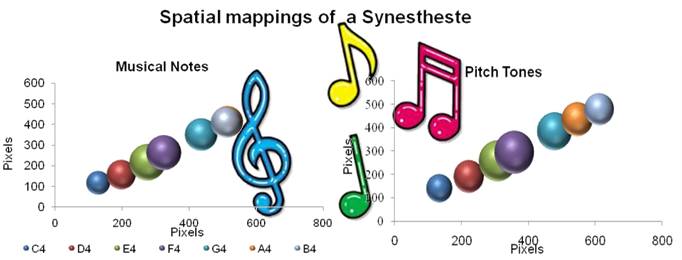
Synesthesia is a unique condition in which one stimulus (e.g., hearing a musical pitch-tone) elicits two perceptual experiences (e.g., a percept of the pitch-tone and a percept of a color).Interestingly, these associations are automatic and consistent over time. Synesthesia research can help us improve our understandingof cognitive processes in the general population, as well as answer various questions on issues of consciousness.So far, musical stimuli have been known to induce color percepts in synesthetes. A different line of research demonstrated that musicians possess a mental representation of musical notes. In other words, musical stimuli are mentally arranged in some unconscious, spatial order. Our research combines these findings. We checked whether musical stimuli could explicitly induce specific spatial locations and thus constitute a form of synesthesia (i.e., automatic and consistent over time). In order to do this we mapped the spatial locations of musical notes in two separate sessions, a month apart, and checked if they were consistent. In a different experiment we checked if hearing anirrelevant musical pitch tone would affect spatial attention.